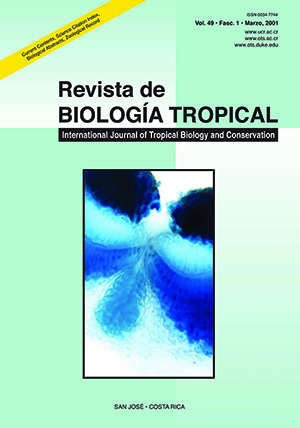Resumen
Se estudió la demografía de Zea diploperennis en siete sitios de cultivo abandonados. La magnitud de las fluctuaciones demográficas fue más grande en las poblaciones de módulos. La dinámica de las poblaciones de genets siguió un ritmo estacional con un tamaño máximo de la población al inicio de la temporada de lluvias; las cohortes más jóvenes presentan la más alta mortalidad, i. e., Y = [sin (–0.288x + 1.657)]2, (r = 0.92, p < 0.01), donde es la proporción de la mortalidad anual y es la edad de la cohorte. La máxima tasa de mortalidad de genets ocurrió durante la temporada de lluvias cuando la densidad de la población fue más alta, cuando la competencia parece mayor. Hubo relaciones lineales entre la tasa de incremento de genets y el estado sucesional y el tipo de suelo. Aquellas áreas con suelos pobres degradados o suelos con similares características, pueden ser rehabilitados introduciendo Z. diploperennis, protegiéndola y combatiendo la degradación del suelo.##plugins.facebook.comentarios##

Esta obra está bajo una licencia internacional Creative Commons Atribución 4.0.
Derechos de autor 2001 Revista de Biología Tropical
Descargas
Los datos de descargas todavía no están disponibles.


